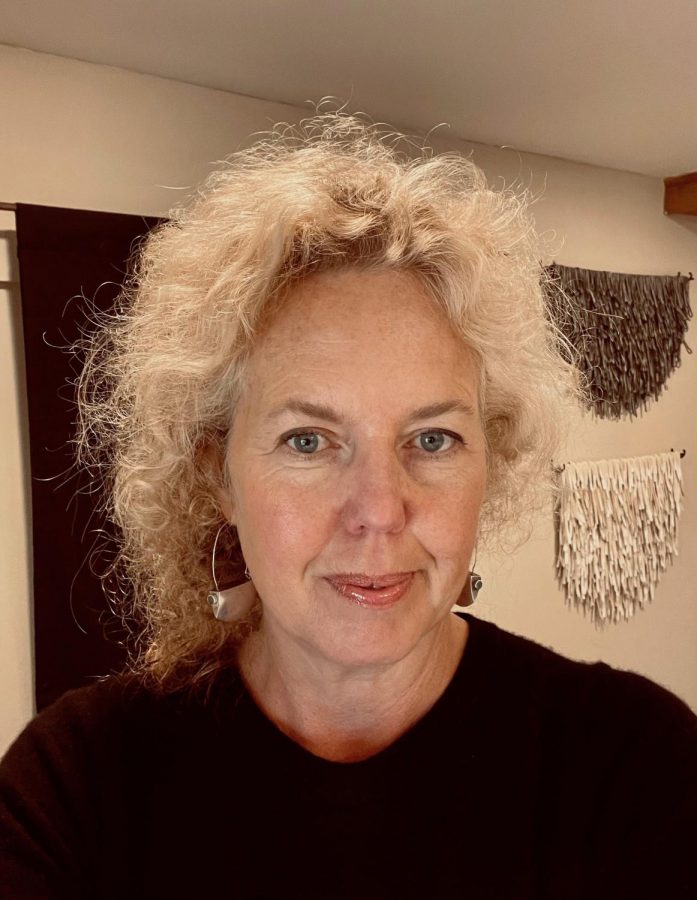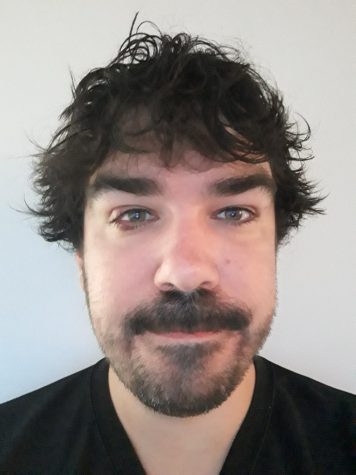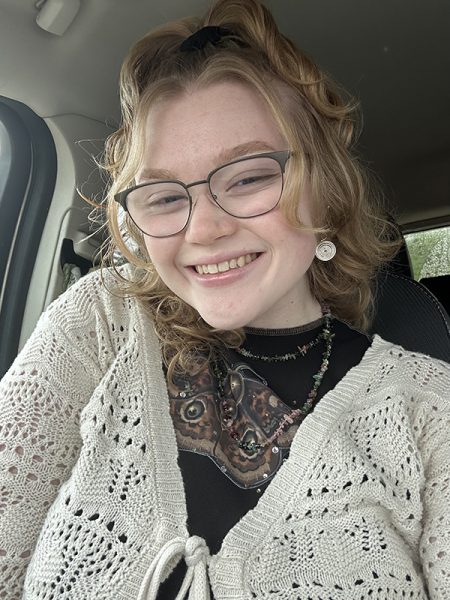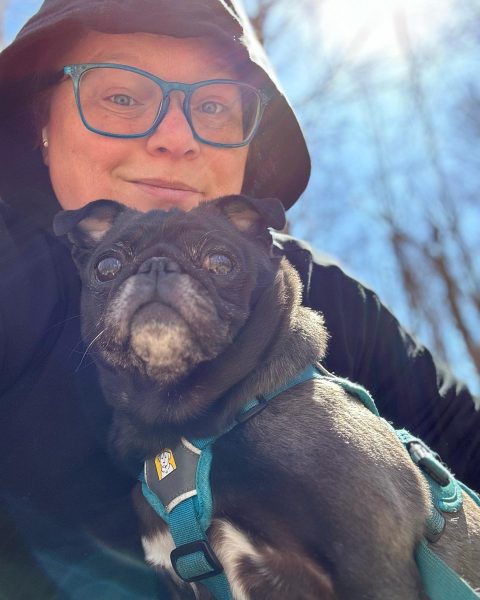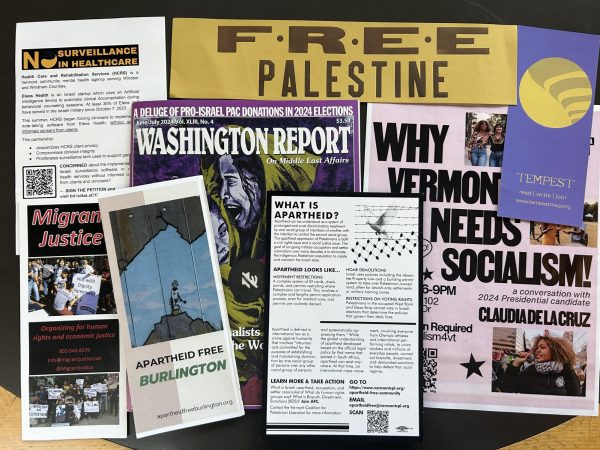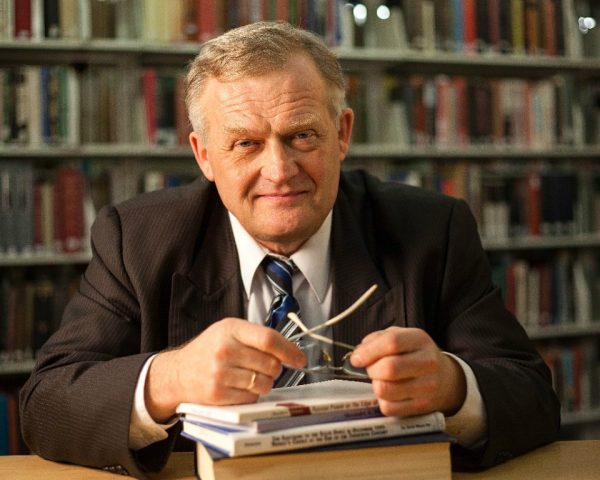Just make work!
Tara Thacker, professor of 3D studio art at the Visual Arts Center
Tara Thacker is the 3D studio art professor in the Visual Arts Center, and she teaches sculpture classes and metals classes among others. Tara works with a variety of different mediums, but she primarily creates ceramic sculptures.
What is one quality about yourself that you wish you could change?
That’s a good one. I think I thought of this recently. I have a tendency to worry about what other people think, and I think sometimes it’s important to have that quality, but other times it stands in the way, for sure.
What is the most ridiculous thing you’ve done that you probably wouldn’t do again?
I was doing something with metal, and I was heating up a form and didn’t realize it was hollow on the inside. I thought it was solid, and it turned into a bomb and exploded. I really could have injured myself greatly. I was just so lucky. There’s been lots of other silly ridiculous stuff that’s happened in my art-related things, so with my students, I’m always telling them, “Know your materials, know what’s safe.”
If you were a pizza, what toppings would you have and what would those toppings represent?
I would be anything super spicy — lots of chilies and jalapenos, because I can be a little bit spicy. But then, I love fully loaded pizzas with everything. I think more, more and more, lots of vegetables, little sausage, pepperoni, lots of onions, but hot peppers are a must. And because there’s so many toppings, it’d be called maybe “the full day pizza,” because I have a tendency where I can be a full day.
What three things would you bring with you to a desert island?
That’s so funny, because I want to do this residency on a deserted island, so then thinking about what I would pack if I were able to be awarded this opportunity. … I think music, somehow sound and being able to listen or being able to record, a sketchbook and some sort of drawing materials. I think if I were on an island I’d want to spend that time sort of looking and observing and really contemplating.
Can I bring someone with me? Yeah? So then, another friend to share along the journey with me. I am thinking about doing this residency as a team, as a collaboration, which would be so cool.
If you could meet three people from history for afternoon tea, living or dead, who would they be?
I would like to I think a lot about art and what has inspired me in my work … Eva Hesse is an artist I would have loved to meet and talk to, so a deceased artist. A currently living artist… I’m fascinated by the work of Petah Coyne, and she just makes these amazing chandelier-like pieces with taxidermy, wax, all these just incredibly strange materials, but they’re just mesmerizing and so beautiful. And then the last one would be someone I never met, my paternal grandmother. I never knew her, but I’ve been told I’m a lot like her in stature. So, I would love to have a conversation and see if that’s true, and what I can learn about her.
What is one thing that you think everyone should do if they could?
Make art. What I mean by that is don’t be afraid to take creative risks, try something new that you’ve maybe always wanted to. I hear from my students a lot, “But I’m not an artist.” Everyone can be creative, and everyone has a unique voice — their self-expression, so use your hands. That’s my thing: just don’t be afraid to use your hands. Try something new.
If you could only eat one food for the rest of your life, what would it be and why?
I’m obsessed with tomatoes. Growing up in Virginia, in southwestern Virginia, it’s just really fertile ground, farm country with lots of produce. Tomatoes get so huge, so in the South, you’d always have like, a tomato sandwich. At my grandmother’s, for every meal we’d always have a plate of tomatoes, and we’d put a little salt on them, so I love tomatoes.
If you could change one thing about the world, what would you change?
I think right now, that people would take more time and have more patience with each other.
What do you think is the best way to eat a potato?
I just did this recently — I went camping over the break, and it was delicious. I just threw a potato wrapped in tin foil, with a little olive and salt, and threw it on the open coals. It just had a really crusty skin, and was soft inside. They were delicious.
Do you have a favorite artist, and if so, who are they, what kind of art do they create, and what about it do you enjoy?
I’m going to talk about [a mentor] instead of favorite artists, because I have a thousand artists that are really meaningful to me. My graduate school mentor was a female artist sculptor named Patti Warashina. She’s just the most prolific artist, really pushing the boundaries, and was one of the first women to be considered in this country as a female sculptor ceramics founder, and she’s still working today like breaking ground, and she has just so much energy, she’s so awesome.
Do you have a favorite piece of art that you’ve created, and if so, what is that?
I do, I have a recent piece that was just installed last week, oddly, at a home in California, but I’ve been making these wall hangings that are based off of bird flight feathers and wing structures. So, it consists of thousands of porcelain, individually-made parts that I’ve stitched together on a canvas backing.
What is a quality in a person that you most admire?
So many. The first thing that’s coming to mind is kind. Kind can be a broad term. By kindness, I mean someone that’s open to others, other perspectives, and is patient and a good listener.
What quality in a person irritates you the most?
Laziness.
What is one of your favorite things about Vermont?
The nature of Vermont. I’m fortunate to live near a lake where I can swim every day in the summer in clean, beautiful water surrounded by loons.
If you were going into battle, what would be your weapon of choice?
If I were going into battle, I’d love to have some type of like, body armor that I created. I always tell my students in jewelry and in metals that I was obsessed with Wonder Woman. It was because of all of her armor and the shields and stuff, so I think that would be fun to be able to make your own armor. I wouldn’t bedazzle it, I’d just keep it as one material, not jewels and stuff, just the beauty of the material, and really structured, and lots of maybe folds and different angles could be interesting.
As a kid, what did you want to be when you grew up? Did you imagine yourself being a sculptor?
Yeah, I think I knew I always wanted to make things. My father was a contractor, and I remember wanting to design houses, so I’d say an architect at a young age, because I remember sitting at the drafting table playing with those little templates to do all these cool drawings, to try and design buildings. So, in some way, I knew I wanted to build things.
Did you take any art classes in high school?
Actually no. I am from a very rural area in Virginia, just outside of Lynchburg, and we had a part-time art department. Art was like a club, but not everyone could take it. Then, I worked after school at a local college where I worked with artists designing flyers, so I learned a lot from that job, and my mom was very creative, and dad was contractor, but I kind of did it on my own.
I was always creating, making jewelry to sell at shows and concerts and stuff when I was in high school, and then I decided to apply to art school, and luckily got in and became obsessed. I was so fortunate to get to a big state school that had a wonderful art department within it, and I just tried everything.
So, if you weren’t an artist, what would you want to be?
I never would have admitted this when I was in high school, or just starting college, but art and science are very related. I think a lot of what I do with art is very much about chemistry, so that fascinates me, about certain materials and understanding materials. But I think I’d also love to study birds. Being an ornithologist would be pretty amazing. I’m obsessed with loons and a caretaker of the loons on the lake, where I live nearby.
What is your favorite pasta shape, and why?
That’s a good question, especially asking a sculptor, because I’ve tried to make homemade pasta and I’ve tried different things. I love orecchiette, because they’re like vessels. … Make a ball, and you press it with your thumb, and you get that nice depression that sort of holds the sauce.
How do you find inspiration for your artwork?
I spend a lot of time outdoors and nature is a big influence on my work, and I try and spend a minimum of an hour walking in the woods every day, summer and winter, and if I can have more time, the better.
I’m just constantly looking at what surrounds me, looking at details and trying to recreate them, and my own interpretation of the landscape, which is very abstracted and ambiguous. A lot of my work tends to reference nature.
What’s the best advice you have ever received, and who gave it to you?
My mentor, Patti Warashina, I was so lucky, said “just make work. I don’t care what you make, just make.” That opened up the ability for me to not be so scared to take risks, to know that I wasn’t going to be judged if I explore new territories or new materials, which is very freeing for artists, because I think art is very personal.
When you make something, you’re sharing a little bit of yourself, and it could be intimidating at times, especially as a young artist. So just try things, just make work. That’s it: just make work.
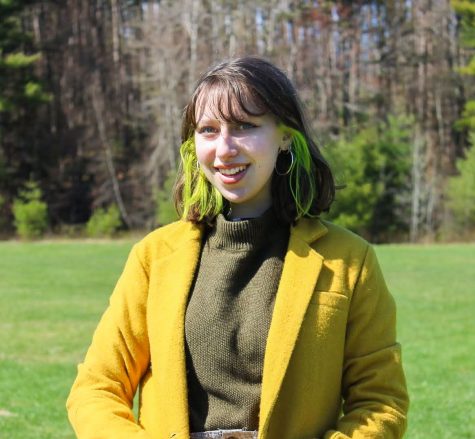
First year
Commuter, from Underhill VT
Fall 2021-Present
I enjoy sewing, Dungeons and Dragons, and eating popcorn.
.-...
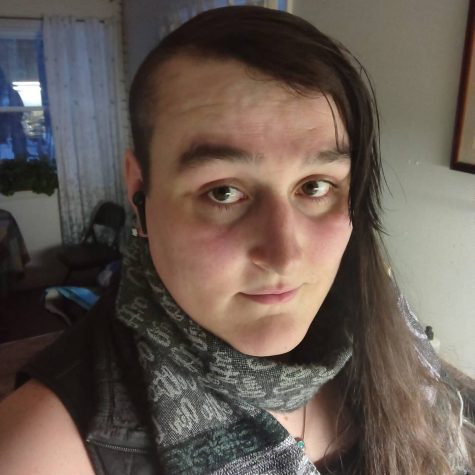
Senior, BFA Creative Writing major from Craftsbury, VT.
Resident Punk Scientist and Basement Medicine Web Wrangler.
I love science and writing, and...


